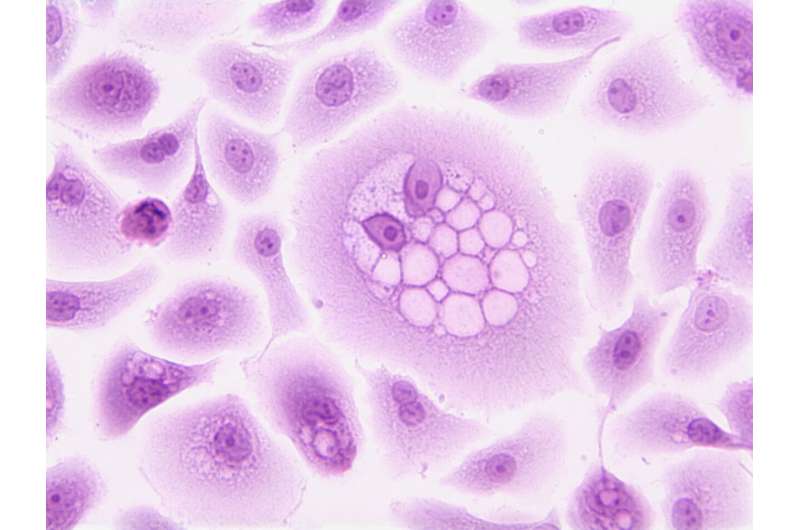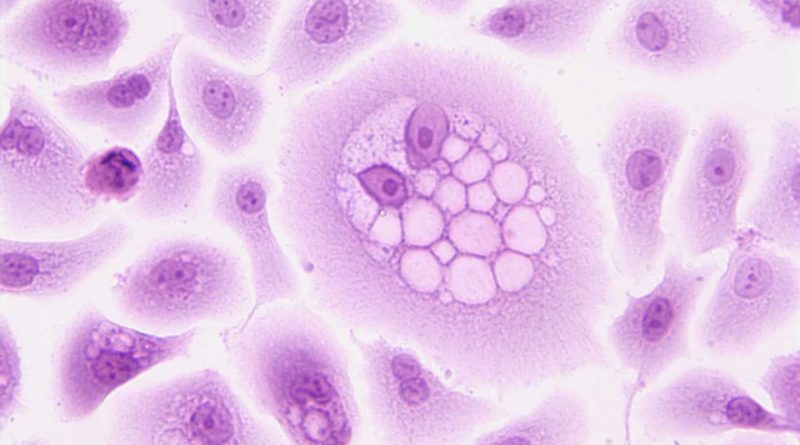To stop spread of cancer, researchers target two signaling switches that trigger new blood vessel growth

Hitting two targets at the same time may be the key to stopping the spread of aggressive cancers, according to new research from the University of East Anglia and the Quadram Institute.
Researchers have found that tumor growth in mice could be stopped by simultaneously targeting two signaling switches that trigger growth of new blood vessels.
Their study, published in the journal Cancer Research Communications, points to new approaches for treating cancer in humans.
Without a blood supply to provide oxygen and nutrients, tumors fail to develop larger than a few millimeters. To grow, they release signaling proteins that trigger cells to form blood vessels, a process known as angiogenesis.
Disrupting these signaling proteins and the receptors on the cell surface that recognize them has been identified previously as a potential strategy to slow tumor growth, but currently the clinical benefits of such interventions have shown limited success unless supplemented by chemotherapy.
In part, this is because researchers are still unsure of the exact mechanisms by which angiogenesis is controlled, either in a healthy state or in cancer. The first of a group of signaling proteins called vascular endothelial growth factors (VEGFs) was discovered in 1970, but it wasn’t until the late 1990s that a family of VEGF co-receptors were identified—these were neuropilin-1 and 2.
Co-receptors are proteins that sit on the cell surface where they recognize and bind to signaling proteins. Neuropilin-1 and 2 bind to VEGFs, in addition to a plethora of other proteins, triggering a cascade of signals within the cell to activate angiogenesis. Stopping this process in cancer could therefore prevent tumors developing the complex organization of blood vessels they need to grow.
Researchers have been trying to do just that, using cell and animal models of cancer to identify compounds that block neuropilin-interactions with VEGF. Indeed, promising candidates targeting neuropilin-1 have already been demonstrated to slow breast cancer progression in mice.
However, to date there have been limited studies targeting both neuropilin-1 and 2 simultaneously. Dr. Christopher Benwell, a Postdoctoral Researcher working with Dr. Stephen Robinson’s team in the Quadram Institute, sought to address this gap in understanding by studying mice in which the genes for either neuropilin-1 and 2, or both in combination, had been deleted.
They found that in multiple models of cancer, targeting both neuropilin-1 and 2 severely inhibited tumor angiogenesis, cancer growth and metastasis, that is, its spread to other secondary sites. Importantly, the extent of the effect was much greater than when either one of the receptors was targeted individually.
“We are really excited by these results and have started to delve deeper into the ways these receptors can be manipulated to control angiogenesis in different disease states,” said Dr. Christopher Benwell.
Further studies in cultured cells suggested how this protection works. When both neuropilin receptors are targeted, the VEGF receptor is rapidly destroyed by the cell, which cuts off the angiogenic response at its source.
Source: Read Full Article



